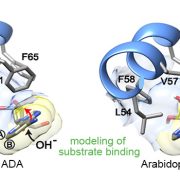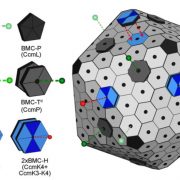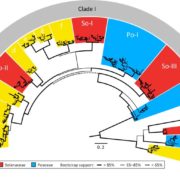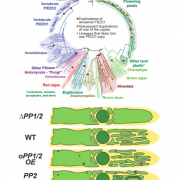Subtilase activity in intrusive cells mediates haustorium maturation in parasitic plants (bioRxiv)
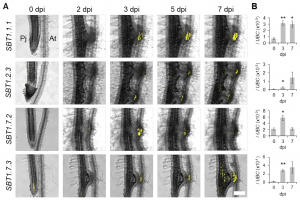 Parasitic plants develop unique structures called haustoria that penetrate into the host plant vasculature, from which they take nutrients. During this process, haustorial epidermal cells differentiate into specialized cells called intrusive cells, which eventually re-differentiate into a xylem bridge connected to the host vasculature. In Ogawa et al., the authors identified differentially expressed genes in the intrusive cells of the model parasitic plant, Phtheirospermum japonicum. RNA-seq data of laser-dissected haustoria revealed genes highly upregulated in intrusive cells as shown by promoter expression, allowing the authors to obtain marker genes specifically expressed in intrusive cells. Additionally, the authors identified four genes encoding subtilisin-like serine proteases (SBTs) that are highly expressed in intrusive cells. Expressing the SBT inhibitor Epi10 (Extracellular proteinase inhibitor 10) in the intrusive cells interfered with xylem bridge formation as well as auxin signaling. These findings indicate that subtilase genes expressed in intrusive cells are required for the auxin-dependent maturation of haustoria during host-parasite interaction. (Summary by Sunita Pathak) bioRxiv: 10.1101/2020.03.30.015149
Parasitic plants develop unique structures called haustoria that penetrate into the host plant vasculature, from which they take nutrients. During this process, haustorial epidermal cells differentiate into specialized cells called intrusive cells, which eventually re-differentiate into a xylem bridge connected to the host vasculature. In Ogawa et al., the authors identified differentially expressed genes in the intrusive cells of the model parasitic plant, Phtheirospermum japonicum. RNA-seq data of laser-dissected haustoria revealed genes highly upregulated in intrusive cells as shown by promoter expression, allowing the authors to obtain marker genes specifically expressed in intrusive cells. Additionally, the authors identified four genes encoding subtilisin-like serine proteases (SBTs) that are highly expressed in intrusive cells. Expressing the SBT inhibitor Epi10 (Extracellular proteinase inhibitor 10) in the intrusive cells interfered with xylem bridge formation as well as auxin signaling. These findings indicate that subtilase genes expressed in intrusive cells are required for the auxin-dependent maturation of haustoria during host-parasite interaction. (Summary by Sunita Pathak) bioRxiv: 10.1101/2020.03.30.015149



